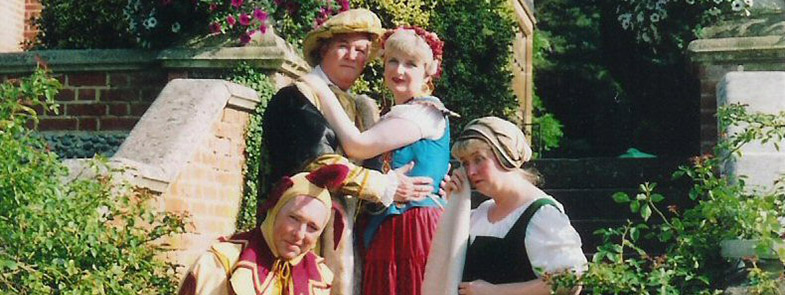As soon as The Mikado had its opening night, Gilbert started work on the next production – Ruddygore. Due to other work commitments, Sullivan delayed setting the opera to music until the latter part of 1886. Rehearsals finally commenced in December that year. The tenth Savoy Opera, Ruddygore was first performed by the D’Oyly Opera Company, at the Savoy Theatre, London on 22nd January 1887.
Gilbert’s Inspiration
Gilbert used elements of Gilbert & Sullivan’s previous one-act operas (such as Ages Ago), as inspiration for Ruddygore. As well as the verses in Bab Ballads. For the latest two-act Savoy Opera, Ruddygore, Gilbert created a parody of the typical melodrama. He took melodramatic stereotypes and turned them upside down – the hero became evil, the villain turned good and the hero took the easy way out!
A tainted opening night
Originally entitled Ruddygore, it had big shoes to fill, after the success of The Mikado. It initially fell rather short of the mark. On opening night the first Act went well but unfortunately, the second Act resulted in the curtain going down to the first ever sound of hissing at The Savoy Theatre. All amid the cries of ‘Give us The Mikado’. This wasn’t helped by an off-night by Leonora Braham (as Rose Maybud) and George Grossmith’s (as Robin Oakapple) with first night jitters.
Changes underfoot
However, not to be defeated Gilbert & Sullivan listened to the critics and implemented several effective changes. This included a slight spelling change of the title to Ruddigore and several changes to the Act Two. Verses were cut, the ghosts didn’t reappear, references to the ‘Supreme Court’ were taken out and the finale was extended. Following these changes, the opera was met with better reviews. Which was enough to warrant a run of 288 performances.
Ruddigore’s revival
Although it received mixed reviews, Gilbert lists Ruddigore as one of his top three favourite Savoy operas. It may have been one of his favourites, but Ruddigore was not revived during the lifetime of either Gilbert or Sullivan. It was left to the D’Oyly Carte Opera Company to revive it in 1920. Amongst other alterations, changes to the music were made that year. This was courtesy of Harry Norris, the musical director of the D’Oyly Carte at the time of the Glasgow revival. Geoffrey Toye the D’Oyly Carte musical director in London, went on to create a new overture the following year.
Ruddigore may have been a weaker Savoy Opera, but it is still being produced and very much enjoyed by audiences today.
If you’d like to experience one of Gilbert’s top Savoy Operas and cast your own verdict on Ruddigore, the Grim’s Dyke Opera Company will be performing a Halloween Special on Sunday 15th October. For further details and booking information please click here.You can find out more about Gilbert & Sullivan here.


